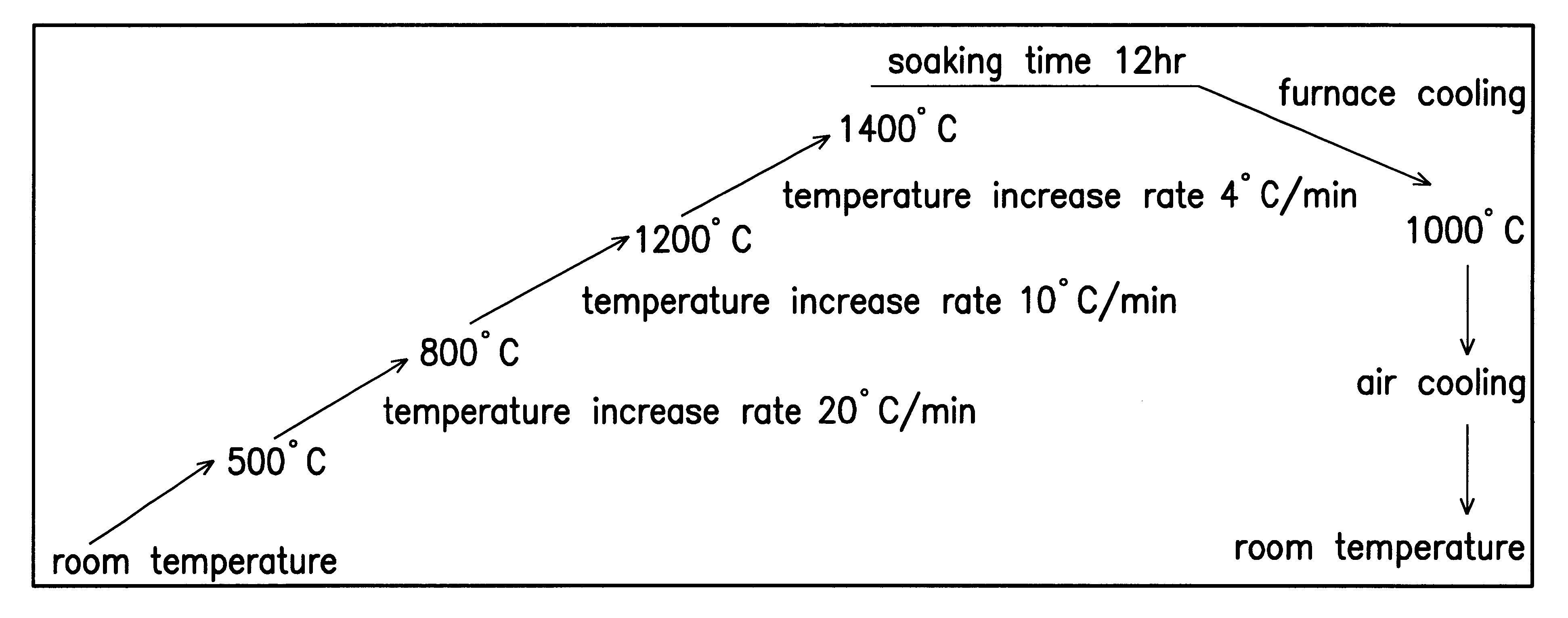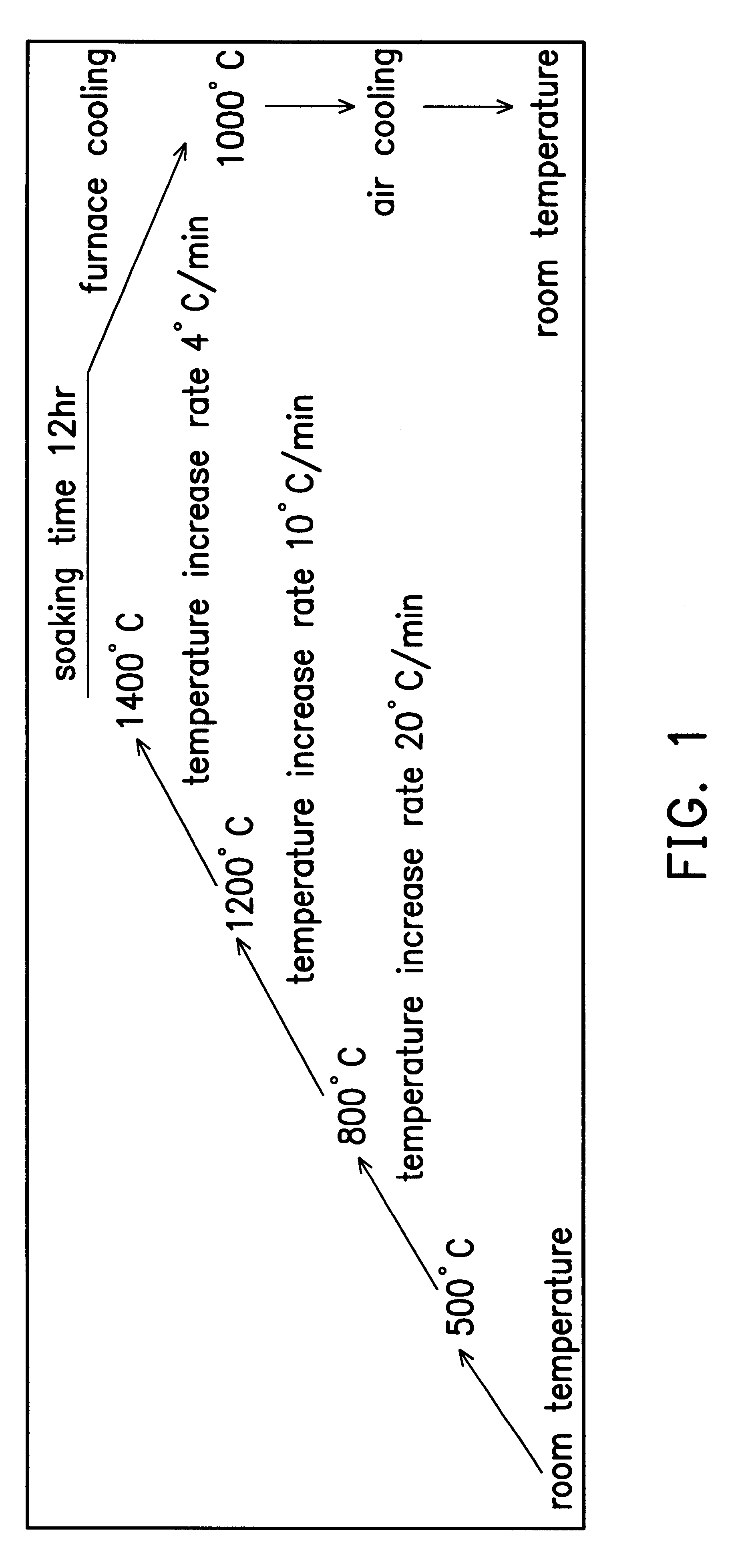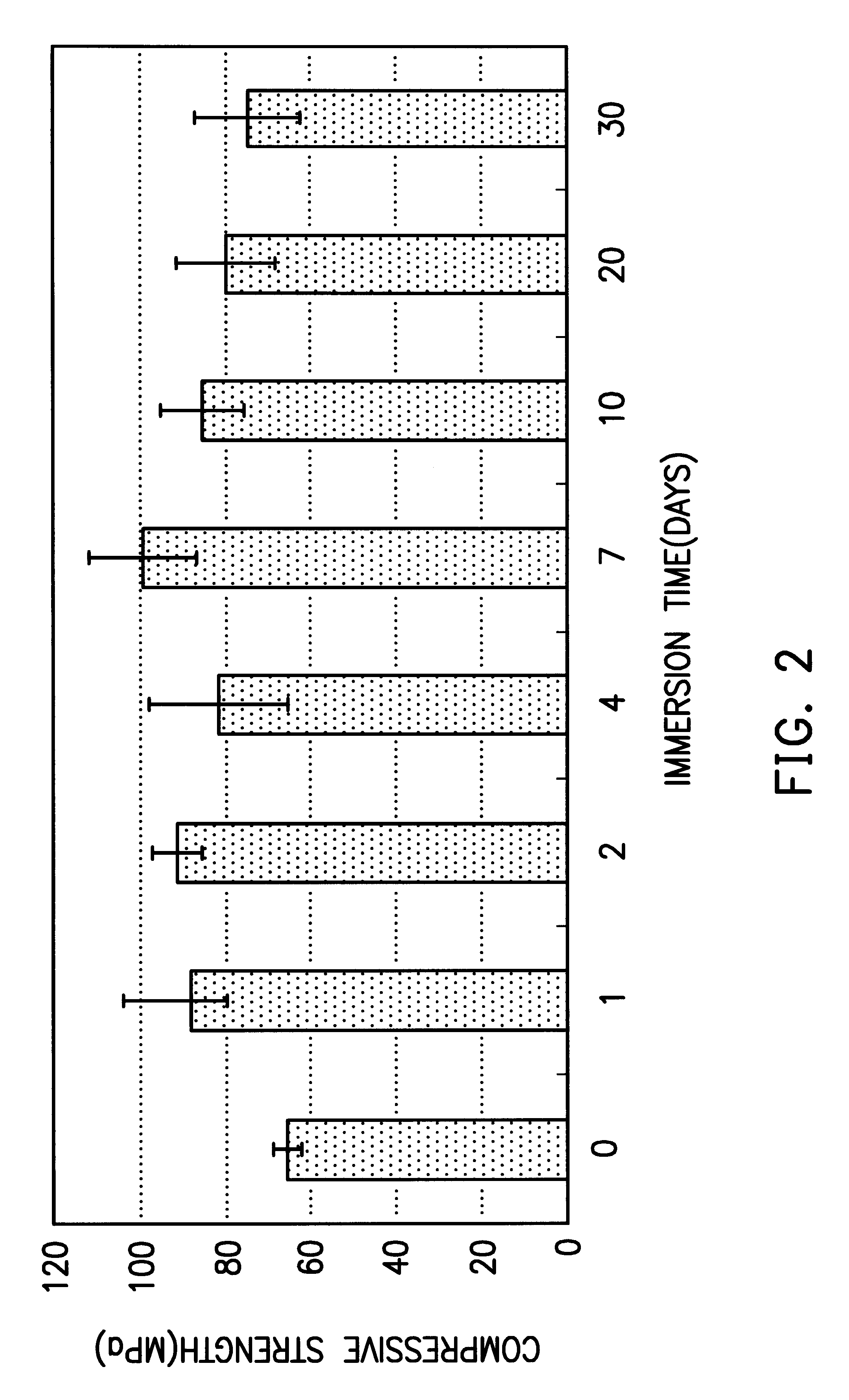Process for producing fast-setting, bioresorbable calcium phosphate cements
- Summary
- Abstract
- Description
- Claims
- Application Information
AI Technical Summary
Benefits of technology
Problems solved by technology
Method used
Image
Examples
example 1
The CPC powder obtained from preparative Example 1 was added in a 25 mM diluted phosphate solution to obtain a paste having a concentration of 4 g powder per 1 ml solution. The pH value of the paste was tested, 1 minute after the addition, by using a pH meter. 270 seconds after the formation of the paste, the pH was 7. 780 seconds after the formation of the paste, the pH was 7.39, and thereafter remained unchanged.
The CPC paste was uniformly filled in a stainless cylindrical mold having a diameter of 6 mm and a depth of 12 mm. The CPC paste was then placed in a saturated steam environment for 24 hours to set. The set CPC compressive specimens were then taken out and immersed in Hank's solution for 1,2,4,7,10,20 and 30 days. The compressive strength of the specimens was tested and the results are shown in FIG. 2. As can be seen from FIG. 2, the compressive strength of the specimens is significantly increased from 65.3.+-.3.3 MPa to 87.63.+-.15.83 MPa after being immersed in Hank's so...
example 2
The fast-setting, bioresorbable CPC powders obtained from preparative Example 2 were added in 25 mM solution of phosphate to obtain pastes having a concentration of 4 g power per 1 ml of solution. The pastes were then uniformly filled in a stainless cylindrical mold having a diameter of 6 mm and a depth of 12 mm as described in Example 1. The pastes were then allowed to harden in the cylindrical mold for 10 minutes, and soaked in 80 ml of deionized water or Hank's solution. The specimens and the solutions were then together placed in a thermostat at 37.degree. C. for 24 hours. The compressive strength was tested and the results were shown in FIG. 3. As indicated in FIG. 3, the compressive strength of the specimens obtained from the fast-setting, bioresorbable CPC powder which was heated to 50.degree. C., is the highest. However, the compressive strength of the specimens obtained from the fast-setting, bioresorbable CPC powder which was heated to 150.degree. C. is also acceptable for...
example 3
The fast-setting, bioresorbable CPC powders obtained from preparative Example 2 were added in 25 mM solution of phosphate, and mixed for 30 seconds to obtain pastes having a concentration of 4 g power per 1 ml of solution. The pH values of the obtained pastes were then measured by a pH meter and the results are indicated in FIG. 4. As can be seen from the drawing, the pastes obtained from the powders which were heated to 50.degree. C., 100.degree. C. and 150.degree. C. are all near neutral and slightly basic, indicating that the pastes would not irritate living tissues. The working times and the setting times of the pastes were measured and the results are summarized in Table 2 below. The setting time is the time required when a 1 mm diameter pin with a load of 1 / 4 pounds can be inserted only 1 mm deep into the surface of the paste. The measurement was conducted every 60 seconds after the pastes were formed. The working time is the time after which the paste is too viscous to be sti...
PUM
| Property | Measurement | Unit |
|---|---|---|
| Angle | aaaaa | aaaaa |
| Percent by mass | aaaaa | aaaaa |
| Mass | aaaaa | aaaaa |
Abstract
Description
Claims
Application Information
 Login to View More
Login to View More - R&D
- Intellectual Property
- Life Sciences
- Materials
- Tech Scout
- Unparalleled Data Quality
- Higher Quality Content
- 60% Fewer Hallucinations
Browse by: Latest US Patents, China's latest patents, Technical Efficacy Thesaurus, Application Domain, Technology Topic, Popular Technical Reports.
© 2025 PatSnap. All rights reserved.Legal|Privacy policy|Modern Slavery Act Transparency Statement|Sitemap|About US| Contact US: help@patsnap.com



